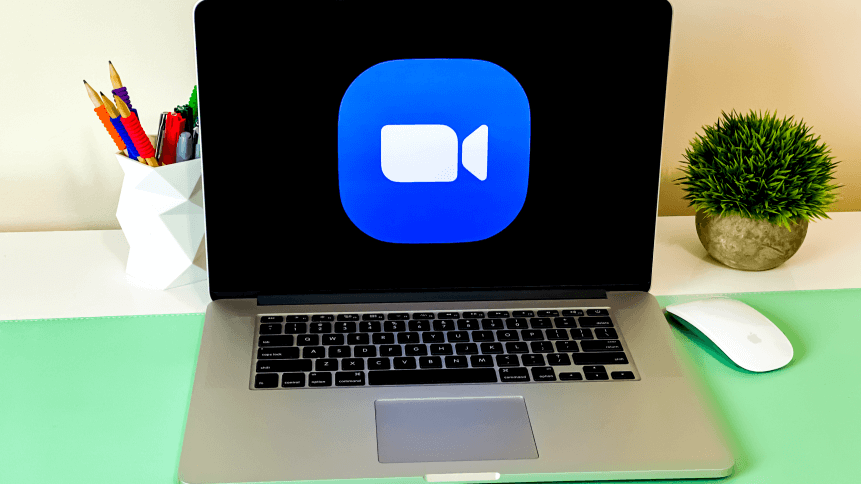
The ‘age of coronavirus’ has, by necessity, led to an unprecedented explosion in video calls. Overnight, many of us have transformed from office workers into telecommuters, thanks to the reliability of videoconferencing apps like Zoom, Teams, or Webex to correspond with our peers ‘in person’.
And while video calls seemed like an elegant solution to remote work, ‘Zoom fatigue’ is almost inevitable.
On March 23, Zoom — which is actually a nine-year-old platform — was downloaded 2.13 million times worldwide, according to app tracking firm Apptopia. Two months prior, the app had just under 56,000 global downloads in a day.
A survey by Gartner revealed 82% of company leaders now plan to allow employees to work remotely, at least some of the time, as we begin to return to the workplace. Another 43% of companies will grant employees flex days, and 42% will offer flexible working hours.
Mentions of ‘Zoom fatigue’ have popped up more and more on social media, and Google searches for the same phrase have steadily increased since early March. Whether Zoom or another video conferencing platform is used for work, for school, with family and friends, or, like most people, all of the above, the increased time spent in front of a camera is taking a toll. As we head toward a new reality of flexible, if not fully-remote work going forward, it’s worth considering today how we can ensure the videoconferencing culture is sustainable.
But how do we make video calls less draining?
Check the tech: First and foremost, with millions of people working and learning from home during the pandemic, internet networks are strained to the hilt. To avoid tech snafus, everyone should make it a habit to test run to ensure the call looks and sounds good — check out our guide on how to get the best sound quality out of your videoconferences.
Plan the calls: Secondly, if it is going to be a videoconference instead of a brief call, set a clear agenda to make the session more tolerable for everyone.
There are a number of approaches to a more organized videoconference. For starters, each employee, ahead of the meeting, can be assigned to talk about something specific, so that everyone has something to do and can stay engaged. To avoid a hard time interjecting during a team conversation, icebreakers would allow each participant the space to make themselves heard from the start. Everyone on a video call should also be mute by default until it is their turn to speak.
Additionally, if you are finding that your team meetings are getting stale and the team is checking out, it might be time to change up your meeting and bring in a Zoom icebreaker to energize and engage the team.

How many Zoom calls have you had this year? Source: Shutterstock
Be selective: It is also necessary to limit the number of video meetings because even in offices, many detest back-to-back meetings, and it is highly likely employees feel the same while working remotely. Perhaps, a good rule of thumb is to book video meetings sparingly. Ideally, reserve them for discussions that require visual aids, like presentations and documents. After all, there is no universal rule requiring you to use video chat to work from home. Sometimes, the old-fashioned telephone is just as good.
Since the platform allows the sharing of pre-recorded video clips and PowerPoint presentations, demo live products, whiteboard key points, and annotate slides to reinforce importance as one present, companies can make use of that to engage participants.
Have a break: Most importantly, breaks in between longer video calls to give everyone the room to stretch, relax, and come back fresher. According to Zoom, its typical in-person basecamp training is delivered eight hours a day, over four days. Its virtual basecamp, however, had to be structured in a way that enabled participants to learn, retain information, and be engaged. That meant breaking up the agenda into digestible chunks.
The team at Zoom themselves believes breaks at every hour are critical in keeping participants engaged. A go-to rule is 50 minutes of learning and 10 minutes to stretch those legs or get coffee, allowing all participants to focus for a set period of time with limited distractions.
Finally, organizations should consider mixing work and some level of fun while social distancing. This can be done by ending work-related video calls with virtual happy hours, in which similar casual and social discussions can evolve while physically isolating.
"make" - Google News
October 12, 2020 at 02:43PM
https://ift.tt/3iR351Z
Zoom fatigue? Make videoconference culture bearable - TechHQ
"make" - Google News
https://ift.tt/2WG7dIG
https://ift.tt/2z10xgv
Bagikan Berita Ini















0 Response to "Zoom fatigue? Make videoconference culture bearable - TechHQ"
Post a Comment